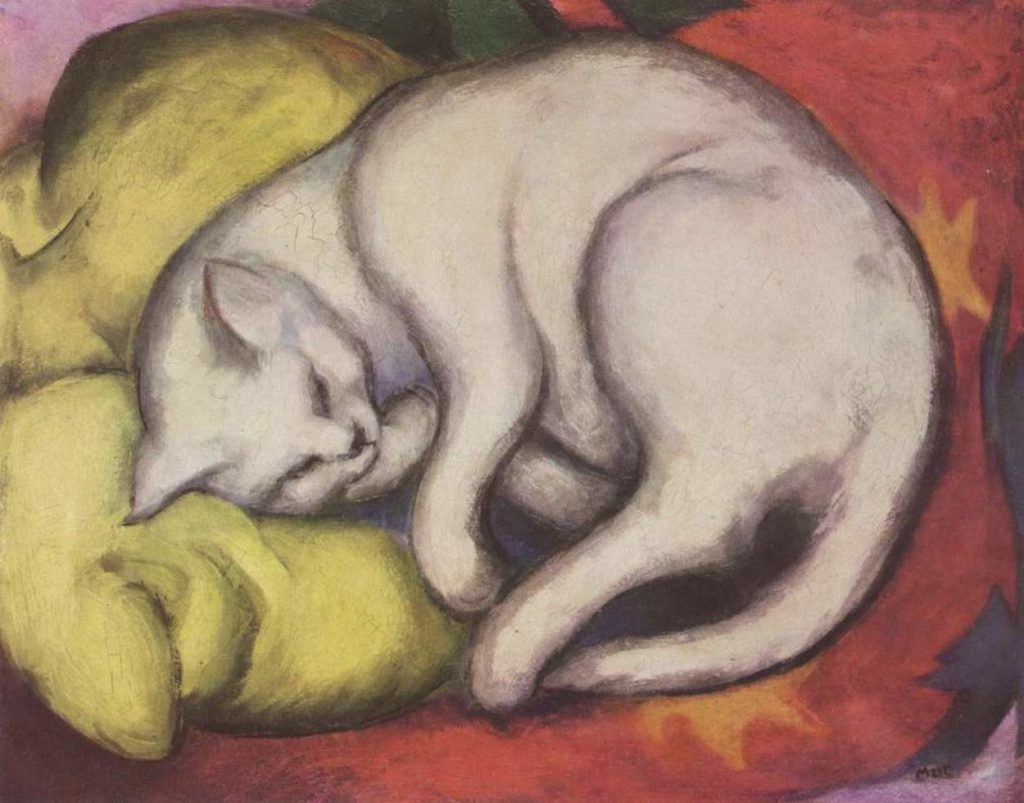
He traveled to the Alpine foothills of Bavaria and later accompanied fellow student Friedrich Lauer to Paris, Brittany and Normandy. Unhappy with his artistic education, Marc decided to end his studies in October of 1902 in order to pursue his own relationship with nature. Very few of Marc’s works from this early period survive, but those that do are very characteristic of the Munich School. Marc’s professors at the Munich Academy of Art, Gabriel Hackl and William von Diez, stressed the importance of plein-air painting and restrained naturalism. Marc very much admired the German Romantic painters, and his early works’ academic tendencies reflect the influence of Runge, Friedrich, Kobell, Blechen, Rethel and Schwind.

In 1899, he enrolled at the Munich Academy of Art, where he studied for two years. After leaving school to perform his year of compulsory military service, Marc decided to become a painter.
FRANZ MARC ART STYLE PROFESSIONAL
Only later did he decide to followed in the footsteps of his father, Wilhelm Marc, a modestly successful professional landscape painter.

After briefly considering the priesthood, Franz enrolled at Munich University to pursue philology or to become a secondary school teacher. There was little direct pressure placed on the boys, and both Paul and Franz ambled through their early adult years, veering from one professional path to another until each discovered a suitable career. Sophie Marc’s brand of “Christian Socialism,” with its emphasis on humility, modesty, spiritual values, literature, philosophy and liberal Christian ideals, informed her children’s education and ambitions. Franz and his older brother Paul grew up in a middle-class household that was notable for its artistic leanings. A serious, intellectually and religiously inclined child, Franz was clearly influenced by his mother, Sophie, a strict Calvinist of Alsatian origin. Marc’s work continues to captivate audiences and collectors through the warmth, timelessness, and expressive nature of his style at Sotheby’s his Grazing Horses III sold for $24.4 million in 2008 and The Waterfall (Women Under a Waterfall) for $20.2 million in 2007.Franz Marc was born in Munich on February 8, 1880. Guggenheim, New York the Museum of Modern Art, New York the Art Institute of Chicago, and many others. His works can be found at every major institution of modern art including the Solomon R. Like Die Brücke, the other major branch of German Expressionism, Blue Rider dispelled at the start of World War I Marc died instantly during the battle of Verdun in 1916 at the age of thirty-six.Īs a fundamental member of Blue Rider, Marc’s works remain crucial lynchpins in the development of Western modernism. Marc’s images of animals and nature, presented through richly saturated, surprising color distinctions and juxtapositions, provided emotional meaning that had been separated from connotation of subject. Beginning in 1911 the major Blue Rider exhibitions, led by Macke and Kandinsky, exemplified the height of German Expressionism as the culmination of Fauvist chromatic liberation, Cubist dissection of form and the aesthetic and ethical questions permeating Western Europe leading up to World War I. The members of the group had divergent approaches to painting, but shared in common the desire to achieve spiritual truth through artistic production. After studying fine art and traveling throughout Western Europe, he befriended Vassily Kandinsky, Auguste Macke and Alexej von Jawlensky, who together formed the Blue Rider.

Marc was born in 1880 in Munich to Wilhelm Marc, an established landscape and genre painter. Marc consistently turned to animals as subject as a means to explore the mystical, spiritual world outside of industrialization and the quickly modernizing world of Western Europe. He was known for his vibrant palette and expressionistic use of color in his paintings and prints.

German Expressionist painter Franz Marc was a leading figure of Der Blaue Reiter (The Blue Rider), a journal and sprawling artistic group in Germany during the years leading up to the first World War.


 0 kommentar(er)
0 kommentar(er)
